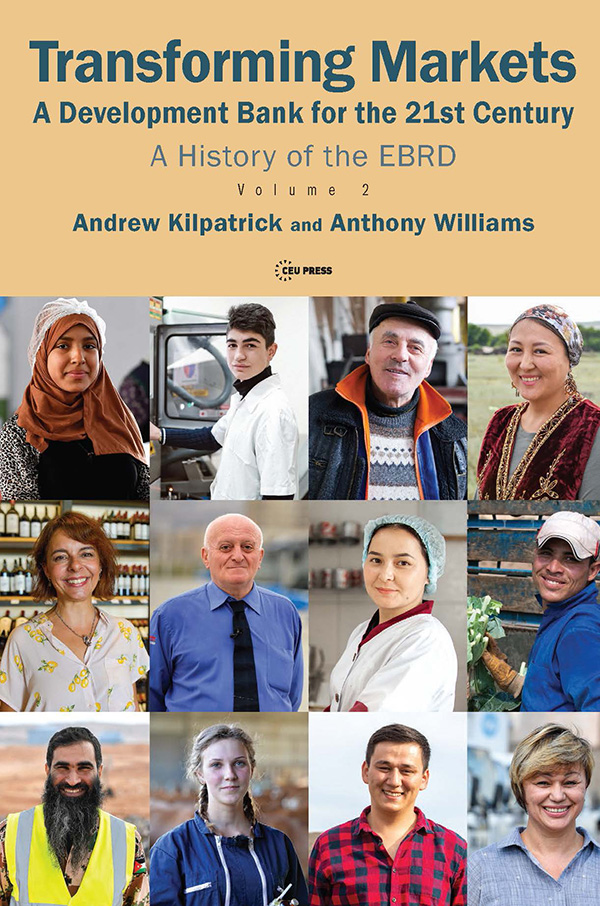After the Berlin Wall
The History of the EBRD, Volume 1

The History of the EBRD is an unofficial two-volume history of the Bank, written by EBRD alumni and published by Central European University (CEU) Press.
By Andrew Kilpatrick
Published: July 2020
After the Berlin Wall tells the inside story of the EBRD, an international financial institution, created in the aftermath of communism to help the countries of central and eastern Europe transition towards open market-oriented democratic economies. It charts the EBRD’s life from a fledgling high-risk, start-up investing in former socialist countries from 1991 to become an established member of the international financial community.
This first volume of a two-volume history describes the multilateral negotiations that created this cosmopolitan institution with a ‘European character’ and the emergence of the EBRD’s unique business model: a focus on the private sector and a mission to deliver development impact with sustainable financial returns. The author recounts the challenges that ‘transition’ countries faced in moving from a defunct to a better economic system and maps the EBRD’s response to critical events, from the dissolution of the Soviet Union, to the safe confinement of the Chernobyl disaster site, the debt default in Russia and the onset of the global financial crisis in 2008.
Read the ebook on the CEU website here: After the Berlin Wall
Transforming Markets: A Development Bank for the 21st Century
The History of the EBRD, Volume 2

By Andrew Kilpatrick and Anthony Williams
Published: September 2021
The second volume of The History of the EBRD takes up the story of how the Bank has become an indispensable part of the international financial architecture. It tracks the Bank’s crucial coordinating role in response to global and regional crises, the calls for its presence as an investor in Turkey, the Middle East and North Africa and later Greece and Cyprus, as well as the consequences of conflicts within its original region. It shows how in the face of the growing threat of global warming the Bank, working mainly with the private sector, developed a sustainable energy business model to tackle climate change. Transforming Markets also examines how the EBRD broadened its investment criteria, and how its approach is aligned with the 2015 Paris Agreement and the international community’s 2030 Agenda for Sustainable Development, with its core set of 17 sustainable development goals.
The story of the EBRD’s own transition and rich history provides a route map for building the sustainable markets necessary for future growth and prosperity.
Read the ebook on the CEU website here: Transforming Markets



